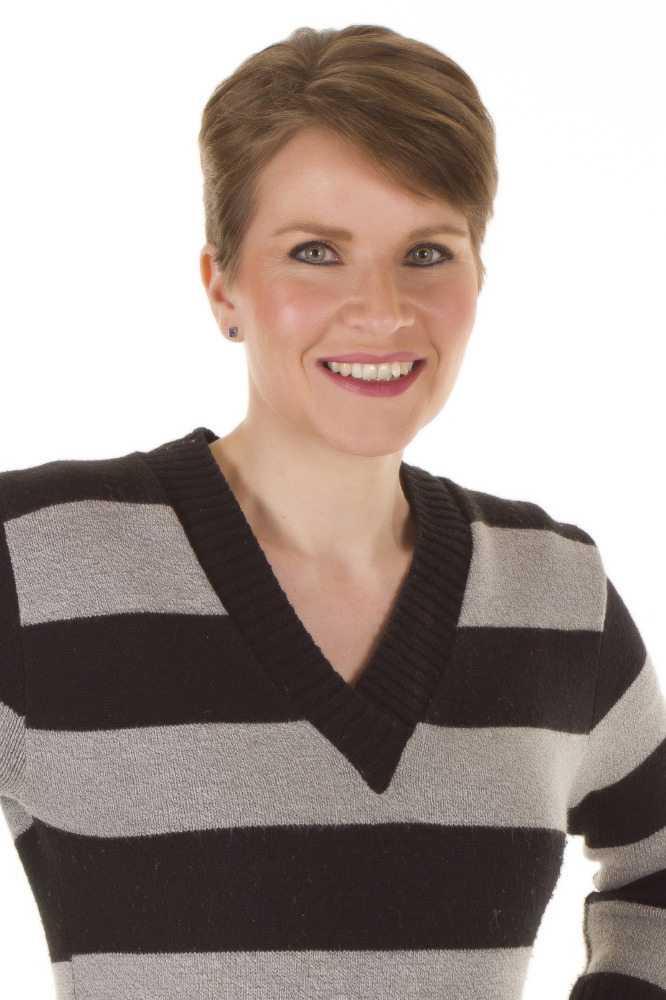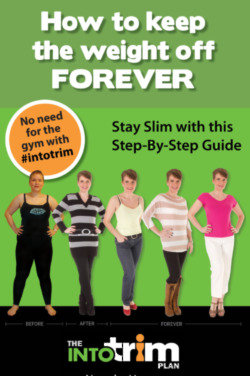
Natasha Hurst

For so long now, we have become used to being told how, when, why and what we should eat by ‘experts’. However, every literary source of help and advice seems to come from either a nutritional or medical authority and not from someone who has actually had a personal battle with food. The IntoTrim Plan is unique because it is written by someone who knows and can relate to real food issues and who had been trapped in the yo-yo dieting cycle for many years.
The IntoTrim Plan bridges the gap between weight loss and intuitive eating and gives you several books in one. You will learn some practical ways on how to deal with some of those food demons lurking around in your head, giving you a head start on previous times when you’ve finished a diet. If you are returning to food after a very low calorie meal replacement diet, the IntoTrim Plan will teach you how to build up to eating proper food again so you don’t regain any of the weight you worked so hard to lose. By following the IntoTrim Plan, you are taught the rules to be able eat ALL food groups (including carbs) and maintain your weight on a diet-based plan. That means if you love bread or don’t have time for exercise, then this will be perfect for you. The book comes complete with portion size guides, meal and snack guides and a whole bunch of calorie tables so you can keep track of everything. There really is nothing else like this on the market and I’m very proud to be able to share it with everyone.
Why do people find it so hard to keep the weight off after dieting and reaching their goal?
We are really good at following rules and regardless of which diet has been followed in order to reach goal weight, dieters would have followed rules for a significant period of time. However, when we finish a diet, the rules have gone along with the diet. Suddenly, we are confronted with too many options and it is all too easy to succumb to temptation. Our minds are very clever in deceiving us. We start making the odd allowance here and there. We use certain occasions as an excuse to eat more than we know we should and before we know it, all the control we had eventually fades. By that stage, we are making allowances all the time and find more and more excuses to eat the wrong things. This is a pattern that many of us go through and many women and men will recognise.
The great thing about the IntoTrim Plan is that it provides a set of easy-to-follow rules. Having a set of rules to follow to maintain weight, immediately after having followed a set of rules to lose weight, means our minds are already primed and our focus is still intact from the weight loss phase. We are therefore less likely to get into bad habits because we are just replacing one set of rules with another. By following the IntoTrim Plan, the weight we worked so hard to lose really can be kept off forever.
Please tell us about the diets you tried.
Over the past 20 years I have tried so many dieting plans! The first of which was a 1,500 calorie-a-day diet. That worked for a bit, until I started saving up all my calories for the evening and I didn’t lose any weight at all. The next diets I tried included not eating carbs and proteins in the same meal, then one where you don’t eat carbs and proteins in the same day. They also worked for a while. After that I tried the milk diet – a glass of milk for breakfast, one for lunch and a proper dinner. That also worked for a bit. Then I followed a 1,200 calorie‑a‑day-no‑carbs‑after‑breakfast diet. That too worked well. Later on, I started learning about healthier eating and, after consulting a nutritionist, went on a low GI style diet and many of the guidelines stuck in the back of my mind. The final diet I did was a very low calorie meal replacement diet which was also effective.
The reason for trying so many different diets was that with most of them, once I regained the weight after having done a particular diet once, it didn’t seem to work a second time around. It was almost as if my body recognised what was happening and refused to play ball – very exasperating!
At what point did you decide to take charge and find another way to keep the weight off?
It was after the birth of my daughter in 2012. I couldn’t believe how I’d let myself go! I was really depressed about my weight. People would say ‘oh you’ve just had a baby,’ but I knew deep down that was no excuse. I’d put on four stone for goodness sake! It was then that I really just became very stubborn. I knew that something had to change. When I stopped breast-feeding, I went on a meal replacement diet one last time, but I was determined to keep the weight off this time and I was going to do things differently after reaching my goal weight. I made a plan. Most importantly, I had to learn how to think differently about food. I researched how to eat healthily. I drew up charts and spreadsheets and formulated a new set of rules to follow, so when I finished dieting this time, I would progress to the next stage – with rules that made sense. Being armed with a structured plan really made things easy. By having a set of rules to follow, it meant that I could detach myself from food a lot more, when previously, my emotions would win and I’d end up eating for the wrong reasons. Once I started making new habits surrounding different food situations, it became easier and easier to make the right choices and decisions. It’s been brilliant and has changed my life. I now eat all food groups, enjoy the odd indulgence and don’t have to feel guilty that I don’t have time for exercise. It’s a great plan – I love it!
Can you give us some real facts about food that we likely don’t know about?
Well, a couple of big examples I can think of straight off are related to food groups and meal times. Firstly, eating carbs is really important, yet it seems to have become the food group to avoid. It is essential for providing us the energy we need. If we deprive ourselves of it, we just end up craving it big time later on. Secondly, eating regularly throughout the day is really important too. Many people skip meals, falsely thinking that by saving those calories they will lose weight or stay slim. However, by skipping meals, your body thinks it is going into starvation mode, so that when you do eat, it holds on to the calories you do take in. By eating regularly however, starting with breakfast, you keep your metabolic rate maximised and because it knows more fuel is coming soon, it doesn’t have to hang on to the calories it takes in for longer than is necessary.
Please give us some examples of bad eating habits.
There are three which come to mind quite quickly. Confusing hunger with thirst is a biggie. Quite often, when we are thirsty we choose to eat something instead. It’s amazing how our ‘hunger’ disappears if we just have something to drink. The amount of calories I now don’t eat because I drink plenty throughout the day is astonishing! Another bad habit is eating large meals, irregularly. It just makes the body want to hold on to the calories it takes in more, because it doesn’t know when the next meal is coming. Also, eating larger portions, less often, stretches our stomachs, which means we get hungry more easily and are more likely to eat more as a result. Finally, making excuses to eat things which you wouldn’t normally eat, just because you are at an event of some sort, is another example that many of your readers will identify with. This type of pattern just leads to more repeated occurrences of this type of eating and, eventually, we end up eating the wrong things all the time. All of these things contribute to putting weight back on after a diet which, I know from personal experience, is all too easy to do.
What can you tell us about the three week programme?
So many of my friends who have successfully lost weight following a VLCD (very low calorie diet) have put it straight back on again after the diet. The IntoTransition three week programme gradually takes you through a step-by-step process, day by day, to introduce food back into your diet, gradually. Your body gently comes out of its starvation mode (which it has been in during the weight loss phase) and into a place where the metabolism builds up to become fast and efficient. It will re‑learn how to process regular meal and snack times, inclusive of all food groups, and because it’s done gradually, you don’t regain weight. What’s lovely about it is that when you get to the end you are primed for the rules of the IntoSuccess part of the Plan, which flow on perfectly from it.
What is next for you?
It is my goal for The IntoTrim Plan to be successful. Not just for me, personally, but also for the millions of dieters out there that have spent a fortune on dieting and who have ended up right back where they started, over and over again. I am really looking forward to the book signings that I have lined up in the South East and it would be great to set up some more around the country. The signings will give me the chance to meet and chat with people who have also struggled with food for many years, just like I did. It would be great if my story inspires and motivates people to make the lifestyle change they just haven’t known how to do until now. After that? Who knows! What’s fascinating is that there is nothing else like my book on the market. There are many books available on how to lose weight, but nothing about what to do when you have lost the weight and how to keep it off. With such a unique perspective being available to everyone, I hope that word spreads fast to the millions of yo-yo dieters out there and I welcome all opportunities to motivate and inspire more people.
l The IntoTrim Plan by Natasha Hurst is available now, priced £14.99. For more information visit www.intotrim.com

